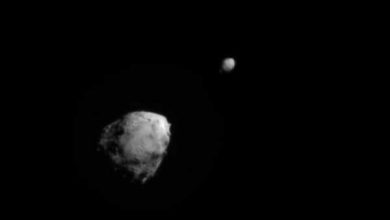PRL Scientists Discover Inflated Hot-Jupiter Around A Sub-Giant Star, Says ISRO

Bhubaneswar: Scientists at the Physical Research Laboratory (PRL), Ahmedabad, has discovered an inflated hot-jupiter around a sub-giant star. The exoplanet search and study group at the PRL, led by Prof. Abhijit Chakraborty, has discovered a new exoplanet orbiting too close to an evolved or aging star with a mass of 1.5 times that of our Sun and located 725 light years away, ISRO posted in its website.
This discovery is made using PRL Advanced Radial-velocity Abu-sky Search (PARAS) optical fiber-fed spectrograph, the first of its kind in India, on the 1.2 meter telescope of PRL at its Mt.Abu Observatory. “Using PARAS, which has the capability to measure mass of an exoplanet, the exoplanet’s mass is found to be 70 per cent and size about 1.4 times
that of the Jupiter”, it said. These measurements were carried out between December 2020 and March 2021. Further follow-up measurements were also obtained from TCES spectrograph from Germany in April 2021, and also independent photometric observations from the PRL’s 43-cm telescope at Mt. Abu.
The star is known as HD 82139 as per the Henry Draper catalogue and TOI 1789 as per the TESS catalogue. Hence, the planet is known as TOI 1789b or HD 82139b as per
the IAU nomenclature. The discovery team includes Prof. Abhijit Chakraborty’s students
and team members, and international collaborators from Europe and USA. This newly discovered star-planet system is very unique–the planet orbits the host star in just 3.2 days, thus placing it very-very close to the star at a distance of 0.05 AU (roughly one tenth the distance between Sun and Mercury). There are less than 10 such close-in systems known among the zoo of exoplanets known so far. Because of the close proximity of the
planet to its host star, it is extremely heated with a surface temperature reaching up to 2000 K, and hence an inflated radius, making it one of the lowest density planets known (density of 0.31 gram per cc). Such close-in exoplanets around stars (with distance less than 0.1 AU) with masses between 0.25 to a few Jupiter mass are called “Hot-Jupiters”.
The detection of such system enhances our understanding of various mechanisms responsible for inflation in hot-Jupiters and the formation and evolution of planetary systems around evolving and aging stars. This discovery work has been published in the refereed journal Monthly Notices of the Royal Astronomical Society, titled “Discovery of an inflated hot Jupiter around a slightly evolved star TOI-1789”, authored by Akanksha Khandelwal, Priyanka Chaturvedi, Abhijit Chakraborty, Rishikesh Sharma, Eike W Guenther, Carina M Persson, Malcolm Fridlund, Artie P Hatzes, Neelam J S S V Prasad, Massimiliano Esposito, Sireesha Chamarthi, Ashirbad Nayak, Dishendra, Steve B Howell. This is the second exoplanet discovered by PRL scientists using PARAS at 1.2 m Mt. Abu telescope; the first exoplanet K2-236b, a sub-Saturn size at 600 light-years away, was discovered in 2018.






